GASTRONOMY OF PUEBLA
Enjoy the Gastronomy of Puebla
The gastronomy of Puebla is internationally recognized for its flavor, its variety and its history. It is the result of the fusion of the culinary tradition of Mexican origin (prior to the colonial period) and the influences of Spanish, French and Arabic cuisine. Each of them contributed not only ingredients – such as tomato, onion, oil – but also utensils and processes that enriched the culinary offer of the state and considered one of the most representative in Mexico.
The geographical location of Puebla was a decisive factor in defining the most characteristic features of its gastronomy. Another characteristic that distinguishes Puebla cuisine is its wide and varied offer of typical breads and sweets.
It should be noted that several of these dishes have been seasoned over low heat, seasoned in the kitchens of the convents, where the nuns experimented with ingredients and techniques, both national, as well as from Europe and Asia; which resulted in a mestizo cuisine that is currently recognized by UNESCO as an Intangible Heritage of Humanity; being the mole poblano and the chiles en nogada the main gastronomic exponents of this mixture.
Chiles en Nogada
The appearance of the famous chiles en nogada, coincides with the stage of National Independence and reaffirmation of sovereignty. That is why they dress in three colors, showing off the flag. In 1821, the year of the consummation of Independence, the patriotic spirit of all Mexicans and the historical events were definitive for our country.
The central character, but not the most important, of these events was Don Agustín de Iturbide, author of the Plan of Iguala and creator of the Treaty of Córdoba, together with the last Viceroy Don Juan de O’donojú, as well as the main signatory of our letter of Independence, and for these and other reasons it was acclaimed.
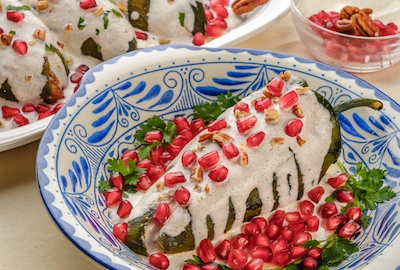
Upon his return from the Villa de Córdoba, where he signed the Córdoba treaty, he decided to visit Puebla, whose inhabitants were faithful to him for having achieved the capitulation of Puebla de los Ángeles. Perhaps for this reason, he decided to celebrate his saint in this beautiful city, where he is received by his supporters with a splendid banquet, on August 28, 1821, the day of Saint Augustine.
The place wore with great splendor the three colors of the rising national flag; green, Independence; the white, the Religion and the red the Union; as well as a select variety of poblano dishes, made by the Augustinian Contemplative Mothers of the Santa Mónica convent. The poblano nuns, infected with the patriotic spirit and fervor that reigned in those days, decided to prepare a dish that had the three colors of the flag, and that is how they created the poblano peppers in nogada, which arise from the purest patriotic and national spirit.
For this they used seasonal ingredients; They took advantage of the tender walnut and crown and vermilion pomegranate so that the sauce and the grains of the pomegranate covered the white and red colors of the flag and green a few parsley leaves, adorning the chili. It should be noted that they selected the best of each area of Puebla, to delight the liberator of Mexico, who would later become emperor.
Mole Poblano
Combines several ingredients, such as chicken, with the mole sauce that is prepared with cocoa or tablet chocolate without or with very little sweetness, ancho peppers, mulato peppers, pasilla peppers, chipotle, tomatoes, almonds, walnuts, raisins, sesame, cloves, cinnamon, parsley, pepper, onion, garlic and of course, tortillas.
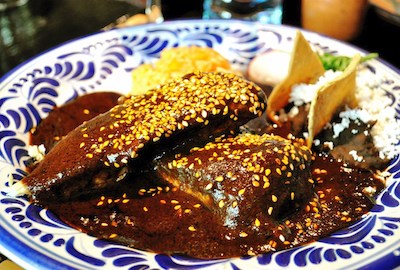
Despite being a dish with an impressive number of strong or highly seasoned ingredients, a well-prepared mole is not heavy on the stomach and is enjoyed a pleasant after-dinner. The correct proportions do not really exist, and some ingredients can be omitted or vary in proportion, although Mexican haute cuisine refers to the oldest cookbooks as the official reference. The mole poblano is one of the most remarkable dishes of Mexican haute cuisine and is the cultural heritage of Mexicans.
There are several versions of the origin of mole, but, according to the Ministry of Agriculture and Rural Development, it occurred with pre-Hispanic cultures, where the indigenous people mixed various chili peppers with pumpkin seeds, holy grass and tomato to create a sauce to which they called mulli. Although for a long time it was believed that this food was created in the Convento de Santa Rosa, in Puebla, when a nun ground different chilies and condiments in a metate.
Currently, the importance of this dish in Puebla is so great that every year they celebrate the Festival of the Mole Poblano in the municipality of San Andrés Cholula, where there is a sample of the gastronomy, traditions and customs of this state.
Cemita Poblana
She is the sister of the torta, a close cousin of the pambazo (French), a distant relative of the paste and the sandwich (sandwich), both of English origin, and a historical precursor of the giant cakes that are sold today in much of the Republic. The cemita arose from a long process of fusion of the sponge cake and the hollow biscuit at the end of the colonial period and appeared as a unique variety and with that name in the mid-nineteenth century.
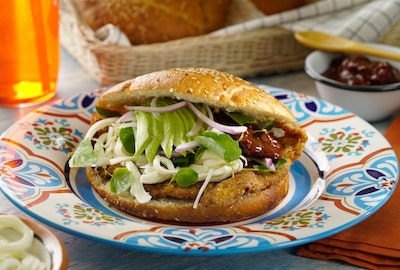
At that time the cemitas were prepared at home and filled with potatoes, beans and nopal, because beef,
chicken or pork were inaccessible to workers and artisans. The first establishment of public sale appeared in the Victoria Market with a new recipe: pata de toro a la vinaigrette with beds of potato, onion and serrano or chipotle chili peppers in vinegar.
The new filling was a great commercial success and avocado was soon added as a dressing and lubricant to lessen the hardness of the bread and so that the bite did not get stuck, as well as a drizzle of oil and salt … Then came the fillings with beef , chicken, cheese, quesillo and carnitas, whose consumption is higher in Izúcar de Matamoros, where they are called semi-volcanoes.
From that same period (1913) dates the adornment of bread with sesame drawings, on whose cover the artisans achieved great skill in drawing: flowers, stars, animals, phrases, names and landscapes. It is famous in Puebla a meal that General Maximino Ávila Camacho gave in Teziutlán in which the cemitas consumed had the coat of arms of that municipality drawn.
There is currently a great variety of places specialized in the production and sale of Cemitas, highlighting the “Mercado del Carmen” as the most frequented by tourists and locals.
Chalupas
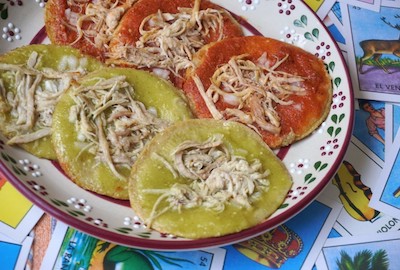
They are corn tortillas fried in plenty of lard. They are bathed with green or red sauce and served with shredded meat. They share the name with the boats or canoes that the Aztecs used to navigate the canals of the capital of ancient Tenochtitlan, now Mexico City.
Chalupas are popular foods in the center of the republic. They are a specialty of the city of Puebla and you can taste them from street stalls to elegant restaurants.
Although many people prefer to cook them without lard, they do not have the same flavor, it can be substituted for corn oil, but it does not have the authentic, succulent flavor of fried fish in lard.
Molotes
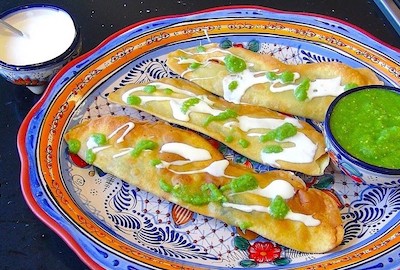
A typical Puebla snack whose history may have as a reference the mixture of Hispanic, Creole and mestizo cuisine, since for its preparation both corn dough is used with a mixture of with a filling of various ingredients of both pre-Hispanic and Spanish origin as well as the cheese, the potato and even the pumpkin flower; In addition, it was during the colonial era that the frying technique was introduced to New Spain, which makes the difference between molote and quesadilla.
However, there is no official recipe. Each of the people who prepare them adds or removes ingredients, but what wheat flour is basic in its preparation is the use of corn dough, salt and wheat flour that should result in a crunchy and thin dough , besides that the filling can be very varied. We find single ingredient molotes such as potato, cheese, cottage cheese or stuffed with stews such as plantain. Finally it is added over this cream, sauce and cheese.
Mole de Caderas
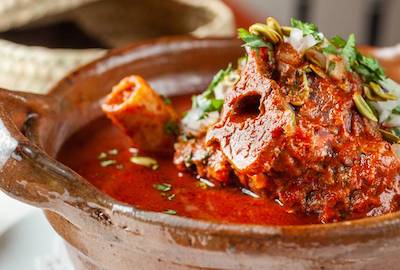
“Mole de caderas” (hips Mole) is tasted every year, in the goat slaughter season, from October 16 to November 10 and is a traditional dish from the Tehuacán-Puebla and Huajuapan de León-Oaxaca region.
The “Festival de la Matanza” accompanies and begins the slaughter of breeding animals for the preparation of food and for the subsequent preservation and curing of the meat.
The mole de hips is made with guajillo chili, chepiches, roasted gourds and ground in molcajete to make mole an exquisite dish.
Typical Sweets
The list of typical Puebla sweets is extensive, but let’s start with one of the most representative: Camotes (sweet potatoes), which were created by the nuns of Santa Clara, to whom we owe almost all the sweets known here.
The stories say that the Camote (sweet potato) was born by chance: a nun made a joke to another of the sisters of the convent and put the sweet potato in a hot pot, which she stirred with sugar and, once cooked, she beat it into a dough, with the intention that no one would like him, but the result was the opposite! Today there are glazed and decorated sweet potatoes, others simply wrapped in wax paper and placed in their boxes ready for sale, all of different flavors that are obtained, above all, from fruits.
From the sweet potato the picones are born, a more elaborate sweet in the form of small volcanoes whose cover is decorated with sugar. As for the flavor, there are strawberry, lemon and pineapple, among others.
In the list you cannot miss the borrachitos, rich rolls or squares of flour and sugar whose filling contains a little soft liquor, hence its name. These have very varied flavors and there are pineapple, strawberry, lemon, anise and even eggnog, and they are a true delight.
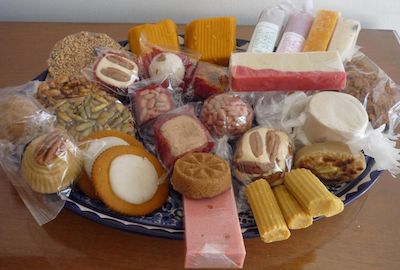
Famous around the world, the Santa Clara pancakes are another of the sweets that we owe to the nuns of this convent. This product, which can be enjoyed alone or with a coffee, chocolate or tea, is made from flour, powdered sugar, egg and lard, among other products, and although delicate, its flavor, like that of others sweets, it is exquisite.
We also have the muéganos, rich pastitas of wheat flour covered with sugar caramel and brown sugar.
The alfeñiques, thin and twisted candy bars, made from sugar paste. They are widely used in offerings and altars, such as those for the Day of the Dead celebration. Among its many forms are those of skulls, coffins, skulls, angels, fruits, animals, houses, among others.
Made with amaranth and piloncillo, alegrías could not have a better name, since they sweeten the soul and leave a smile in the heart; in addition, they are very nutritious. They are regularly presented in two forms: rectangular or circular bar.
Some alegrías are decorated with pepitas, raisins, peanuts and even blueberries, which makes the product even more nutritious and delicious. A similar case is that of the levers, nutritious and with brown sugar, but having peanuts as the main ingredient.
Mazapan made of flour, peeled and roasted peanuts, and powdered sugar, are other sweets that have changed their appearance over time, since they are currently more elaborate and “commercial”, although the truth is that they are still very rich.
Other sweets are polvorones, wafers with honey, colored and pumpkin pepitorias, alfajores, crunchy buñuelos, milk sweets, pine nut macaroni, panela pigs and burritos, glazed lemons, fruits crystallized, cocadas, merengues in their different forms, “jamoncillos” and many others.
Other Dishes
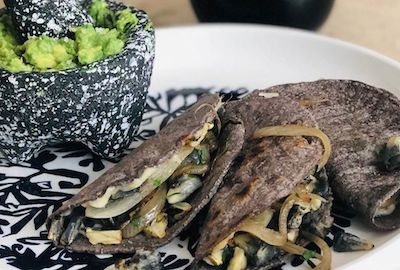
Huitlacoche (Cuitlacoche)
Desde junio y hasta agosto, las mazorcas de la primera siembra sufren de la podredumbre dejada por la lluvia, y con ella aparecen los huitlacoches o cuitlacoches, hongos negros adheridos a los elotes tiernos, que constituyen uno de los manjares de la región, se complementan con las rajas de chile poblano, ya en producción para ese momento, granos de elote y a veces costillitas de cerdo. Gracias a su exquisito sabor le han llamado el caviar mexicano o trufa mexicana.
Huazmole
It is a mole prepared with goat spines and hips sacrificed in Tehuacán, it is a tradition inherited from the customs of Spanish transhumance fused with the seeds of the gourd, a legume from the region and the dry serrano pepper. Currently, some variations have been added, such as the fried or garlic backbones and the hips baked in spicy mustard. It is a dish that can be enjoyed in the October season and until the end of November, it is part of the gastronomy of Puebla.
Chileatole
This preparation is made with tender corn atole and poblano chile with low heat, in the Puebla region it is usually enjoyed in the afternoons.
Huazontle
This herb adored by the pre-Columbians and whose seed is amaranth, is a delicious dish that is prepared in the months of March and April. The well-cleaned huauzontles are filled with fresh goat cheese and weathered to put them in a tomato sauce, it is a meal with influence of pre-Hispanic clemole.
More Tourist Attractions in PUEBLA
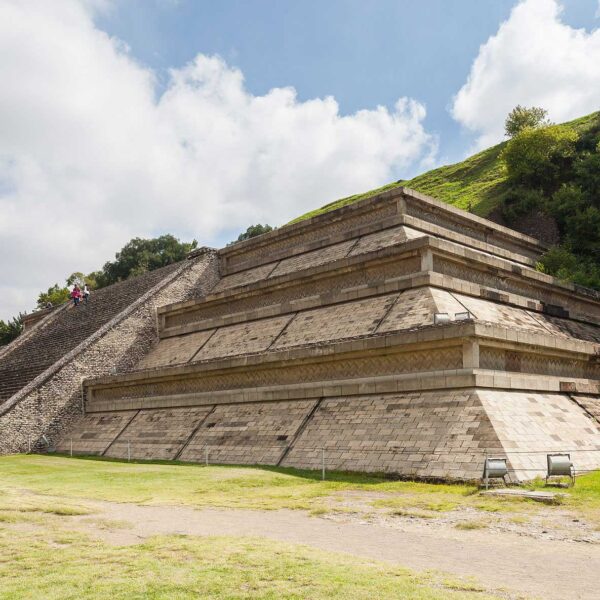
Archaeological Sites in Puebla
Puebla has a great pre-Hispanic heritage. There are diverse archaeological zones, and some of the most outstanding are: Cholula, one of the most important ceremonial centers; Cantona, known worldwide as the splendour of Mesoamerican urbanization; and Yohualichan, that means “The house of the mysterious night” at the Sierra Norte.… Read More
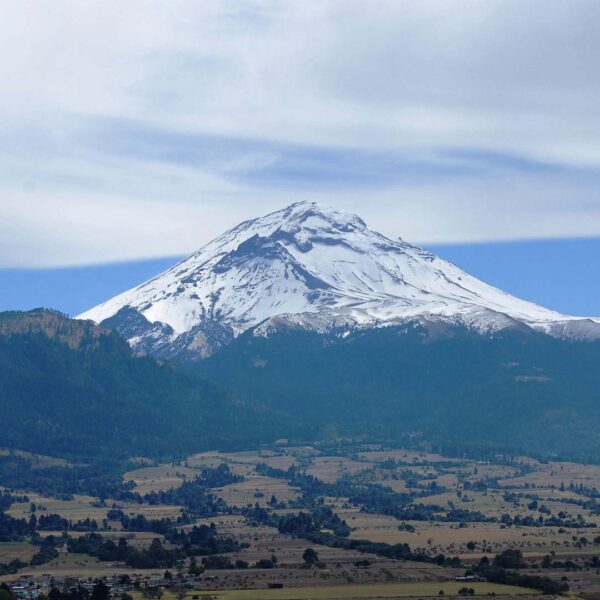
Ecotourism and Adventure in Puebla
Due to the natural richness of the state, there are a wide selection of activities for people who love nature, such as mountain climbing, photography, horseback riding, hiking, fishing, rafting (through rapids) speleology, hang gliding (delta and paraglide) cycling, camping and rappel among others.… Read More
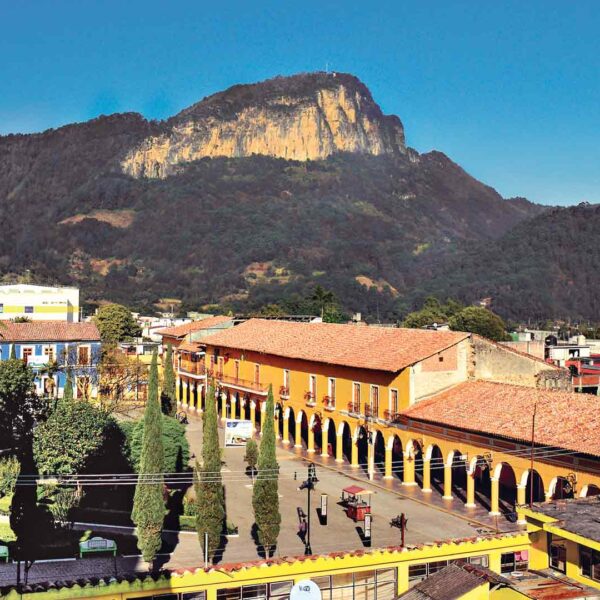
Magical Towns in Puebla
Among the ideal tourist places to organize a weekend getaway, the Magical Towns of Puebla stand out. Each one has its own personality and activities for all tastes. You can stroll through its streets and admire its architecture rich in history. In each one you will find many options to try local cuisine and classic Poblano dishes. Do not forget to visit its markets and fill yourself with colors, flavors and crafts, from the famous Puebla talavera to indigenous artistic expressions. And if you prefer contact with nature, you also find options to quench your thirst for adventure.… Read More
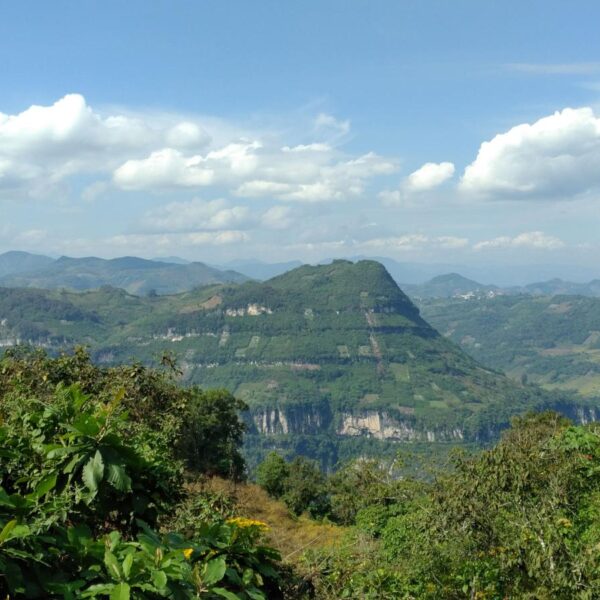
Puebla City Surroundings
Puebla has everything for that escape you long for, with its cloud forests, mountains, hot springs, waterfalls, rivers, lagoons and even volcanoes, together with its magical towns, its gastronomy and its culture. You don’t need to cross borders, board a plane or travel whole days by road to enter paradise. There are many places near Puebla to visit and enjoy. The surroundings of Puebla and its natural beauties are countless, the imposing Popocatepetl volcano, an excellent climate, the colorful markets, its flavors and textures, and the smile of a local child that makes you feel at home is never lacking.
… Read More
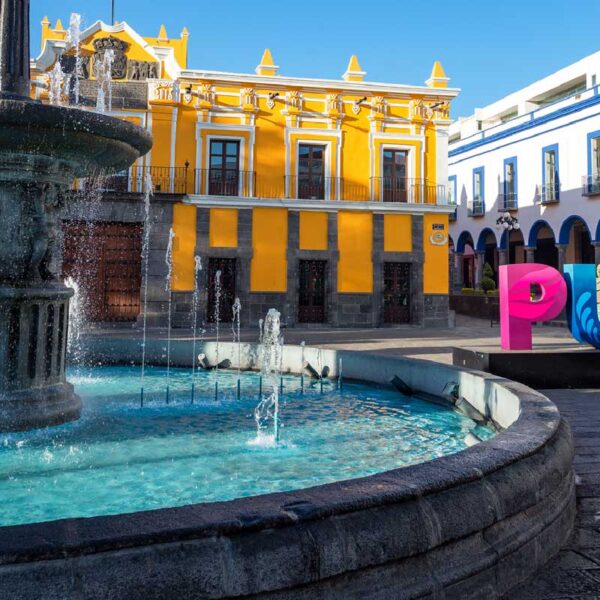
Puebla City
The City of Puebla is a place full of culture, charm, traditions, history, beliefs… The magnificent trace of the city has made up the legend that were the angels who did it. Puebla is a jewel of world’s architecture and has been able to adapt spaces and fill them with life and movement. It is located 85 miles away from Mexico City (CDMX). Modern highways communicates with all the main cities around the country. It has an International Airport, named Hermanos Serdán, as well as an important Bus Station. … Read More
Guided Tours in PUEBLA
Flights & Hotels in PUEBLA
More Tourist Attractions in MEXICO

Capital Cities
Folklore, gastronomy, literary culture, art and exhibitions, is what you will find in the capitals of the states of Mexico. To the north, colonial Mexico, Puebla, Guadalajara, Guanajuato, the Sonoran desert and the California peninsula. To the east Veracruz and the gulf. To the west Acapulco, Oaxaca and Tuxtla Gutiérrez. And to the south the Riviera Maya and the pyramids of Chichén-Itzá, Tulúm and Cobá in Yucatán, Palenque in Chiapas, the cenotes, and the Central American jungles.… Read More

States Of Mexico
Mexico has an incredible diversity of landscapes, where the beauty of its beaches, internationally recognized, stands out. In its vast territory of coasts, there are beaches of unparalleled beauty, and colorful landscapes. A large network of first-class hotels and tourist services is available to visitors to these beaches. Mexico is also mystical places, dotted with archaeological testimonies inherited from its original inhabitants. Monuments made by the Mayas, Aztecs and Toltecs are located in magical landscapes, like lighthouses in an ocean of natural beauty. They offer visitors buildings that tell their history, and museums that collect their cultural heritage. And that keep alive ancestral traditions, in ceremonies and festivals, where you can enjoy cultural activities and entertainment.… Read More

Traditions in Mexico
It is practically impossible to make a meticulous, and above all, accurate selection of the places to visit in Mexico. Each place that our country houses is unique and beautiful in its own way. Mexico, with its nearly 2 million km², has a large number of scenarios to offer, as well as endless activities to do. Do not lose your way and enter the places to visit in Mexico. In Mexico, apart from the beaches and its famous archaeological sites, there are many other really interesting sites and activities that you should know. In the surroundings of the main cities you will find places full of culture and tradition, where you can spend relaxing, interesting and fun vacations. On your trip through Mexico you cannot stop obtaining souvenirs, the crafts that are made here are of the highest quality and recognized worldwide. A shopping tour cannot be missed.… Read More

Archaeological Sites
The Archaeological Zones are the cultural past of every Mexican. You will be amazed at the ambient, nature and the environment that surrounds them. Climbing to the top or being around it will take us back in time to admire every detail. México is a country of culture and traditions, many of which we have inherited from the pre-Hispanic inhabitants of this vast territory, although it is true that there were more settlements in the central and southern part of the country, it is also possible to find some archaeological remains in the north.
… Read More

Beaches
On the Beaches of Mexico you can immerse yourself in the intense blue ocean of the Pacific bays, sunbathe on the shore of the warm and transparent waves of the Caribbean Sea in Quintana Roo or even rest on the beautiful coasts of the Gulf of Mexico. Mexican beaches hide wonderful secrets for the traveler. By visiting them, in addition to enjoying the excellent climate and water activities, you can discover splendid archaeological sites and interesting colonial cities without traveling long distances.… Read More

Magical Towns
A Magical Town is a place with symbols and legends, towns with history that in many cases have been the scene of transcendent events for our country, they are places that show the national identity in each of its corners, with a magic that emanates from its attractions ; visiting them is an opportunity to discover the charm of Mexico. The Magical Towns Program contributes to revalue a set of populations in the country that have always been in the collective imagination of the nation and that represent fresh and varied alternatives for national and foreign visitors. A town that through time and in the face of modernity, has conserved, valued and defended its historical, cultural and natural heritage; and manifests it in various expressions through its tangible and intangible heritage. A Magical Town is a town that has unique, symbolic attributes, authentic stories, transcendent events, everyday life, which means a great opportunity for tourist use, taking into account the motivations and needs of travelers.… Read More

Ecotourism and Adventure
Mexico is one of the best countries for Ecotourism as it has a great variety of flora and fauna, as well as a large number of refuges for extraordinary species. You can enjoy recreational activities of appreciation and knowledge of nature through contact with it, such as: stargazing, observation of natural attractions, wildlife and bird watching. Throughout México there are more than 176 protected natural areas, 5 of them considered by UNESCO as Natural Heritage of Humanity. Just for this and much more, we believe that Mexico is a Paradise for Ecotourism.… Read More

Gastronomy
The Gastronomy of Mexico has a great diversity of typical dishes, which is why it was recognized by UNESCO as Intangible Heritage of Humanity. The basic and representative ingredients of Mexican dishes are: corn, coriander, chili, beans, piloncillo, nopal and tomato. Mexican cuisine is also characterized by its sauces, which serve as an accompaniment to traditional dishes, prepared based on spices.… Read More

